UNATUR
“Unatur” is a Danish word meaning an event, or entity, which seems unnatural.
This is a project inspired by myths and iconic archetypes found in classical marble sculptures and dusty, old books.
Stormy, curling compositions capture poisonous plants and dangerous creatures in intricately detailed drawings,
but not as a warning – rather, for their abundant, timeless beauty.

Sphinx and Serpent
Three elements known from ancient myths and legends:
serpents, Poison Ivy vines and the wise and merciless Sphinx.
Pencils on paper
28 x 36 cm
2022


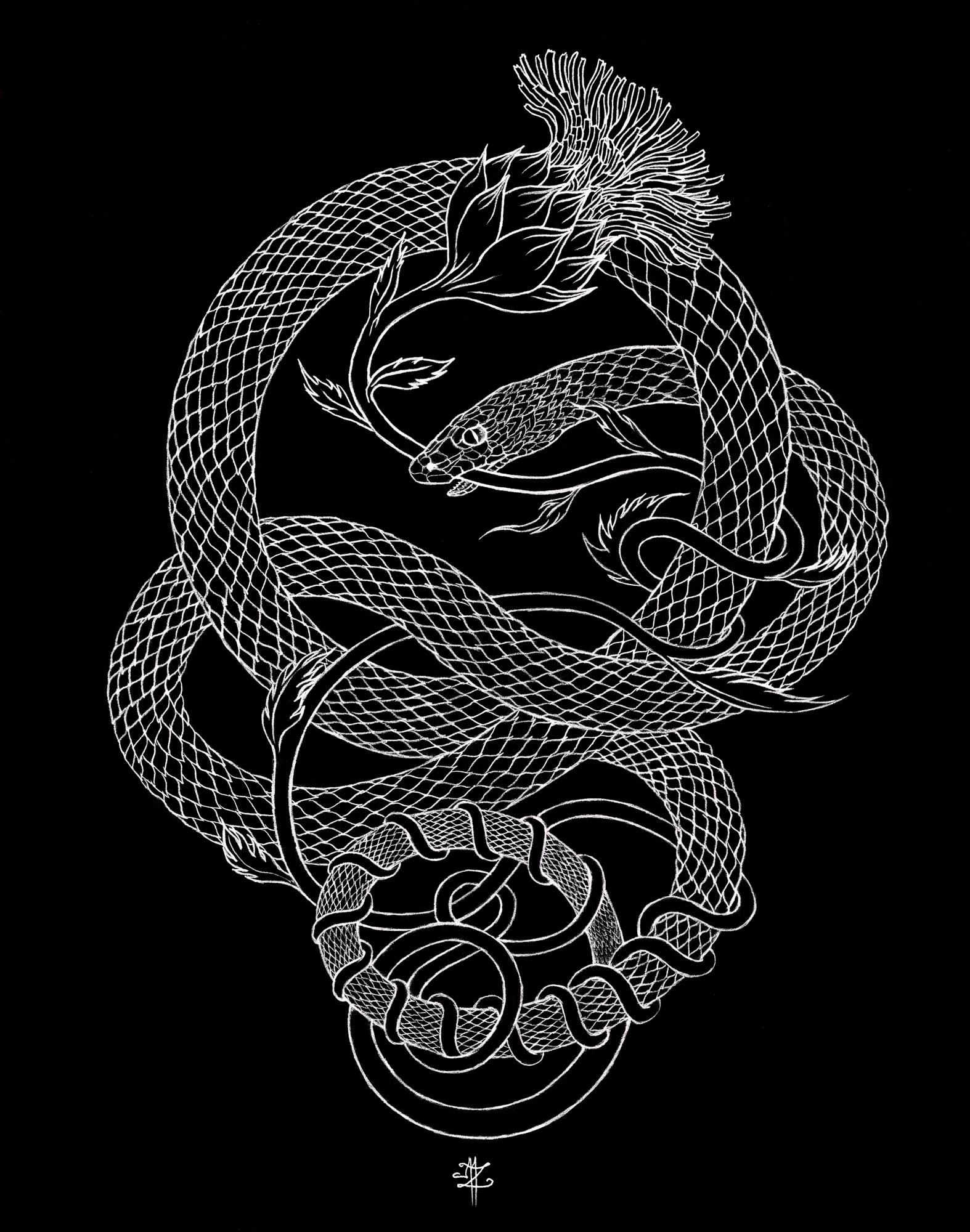
Snake and Thistle (Ouroboros)
An Ouroboros is an ancient symbol depicting a serpent or dragon eating its own tail.
A sign of life, death and rebirth.
The thistle and snake represent the worlds of flora and fauna.
Pencils on paper
28 x 36 cm
2021
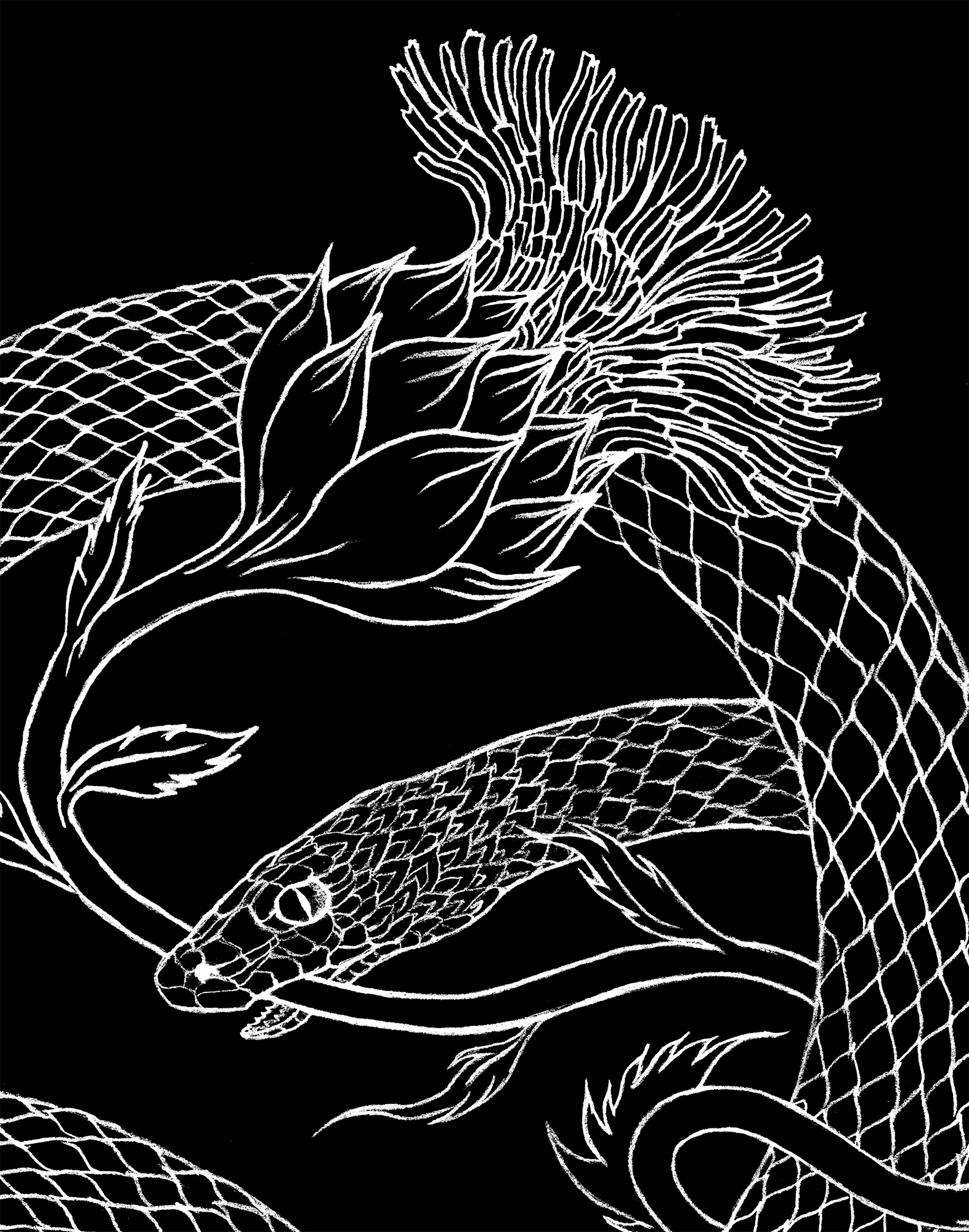
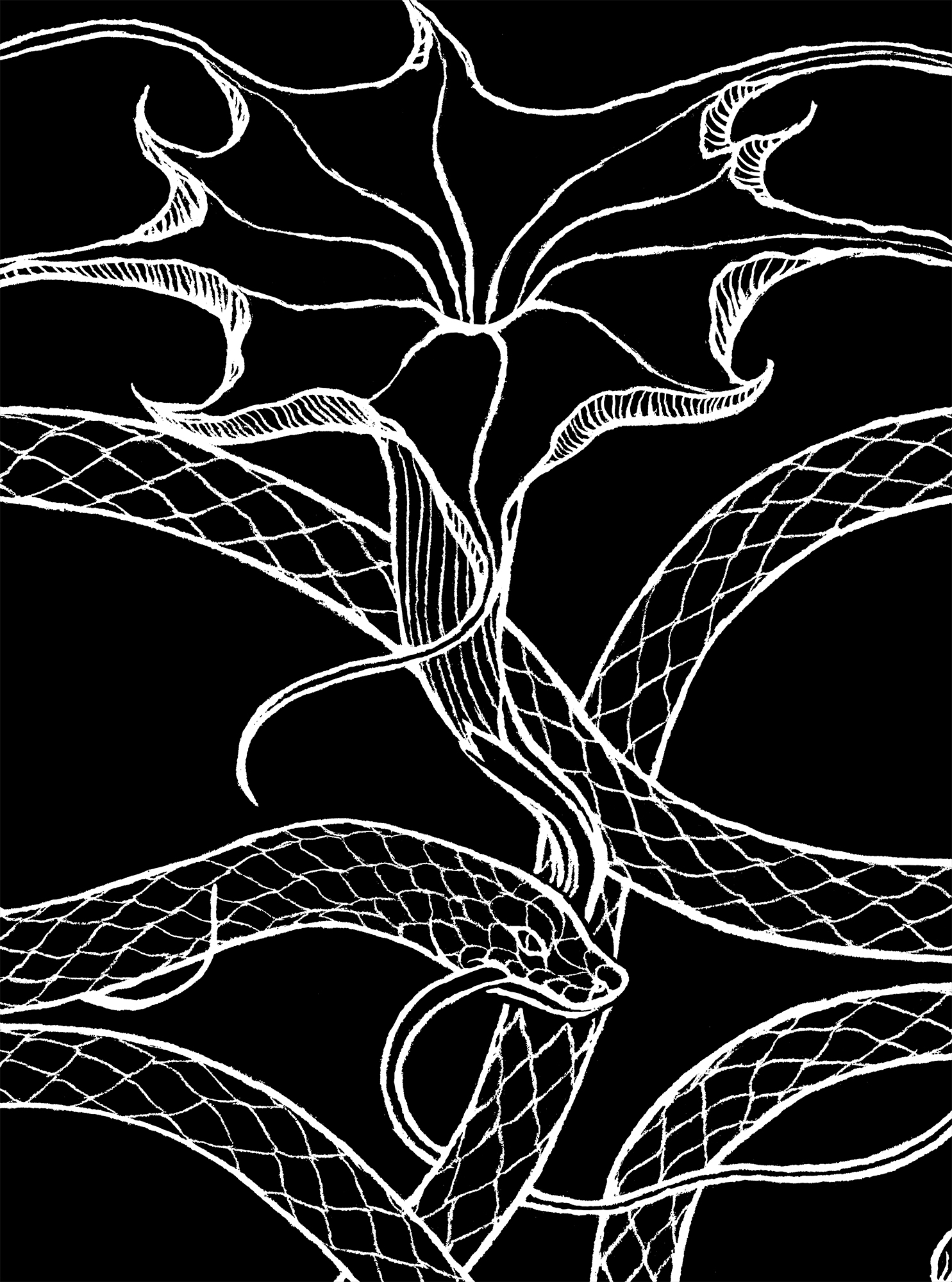

Amphisbaena and Datura
Flora and Fauna, venom and poison:
Amphisbaena is the venomous snake with two heads -one in each end.
In Greek mythology, it was created from the blood of Medusa when her head dripped on the Libyan Desert. Here, one of the snake heads bites the Datura flower -also known as the Devil’s Trumpet, which is one of the most poisonous plants in the world and known to cause madness and death.
Pencils on paper
28 x 36 cm
2023

Transience I: Death’s-Head Hawkmoth
Transience: Drawings about the cycle of life and death in nature.
Nothing ever really dies, it just changes shape. The corpse of a moth will some day be the soil that nourishes delicate flowers.
The Death’s-Head Hawkmoth is known for the skull-like pattern on its back, which has fostered superstitious fears among humans since it was discovered.
Pencils on paper
22 x 16 cm
2023



Transience II: Spider and White Oleander
Transience: Drawings about the cycle of life and death in nature.
Nothing ever really dies, it just changes shape. The corpse of a spider will some day be the soil that nourishes delicate flowers.
Despite its pure, white color and fragile appearance, White Oleander is one of the most poisonous flowers on Earth.
Pencils on paper
16 x 22 cm
2023


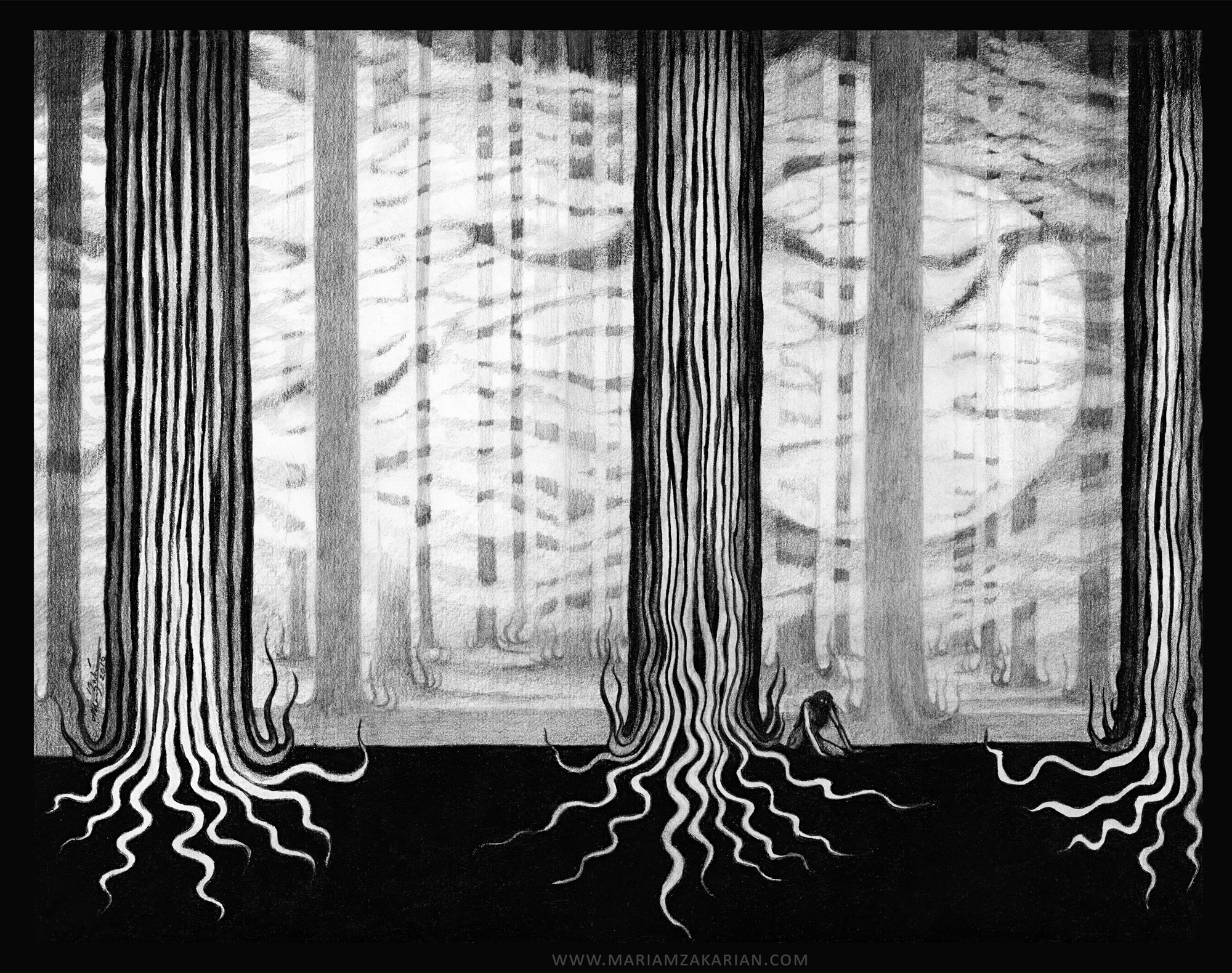
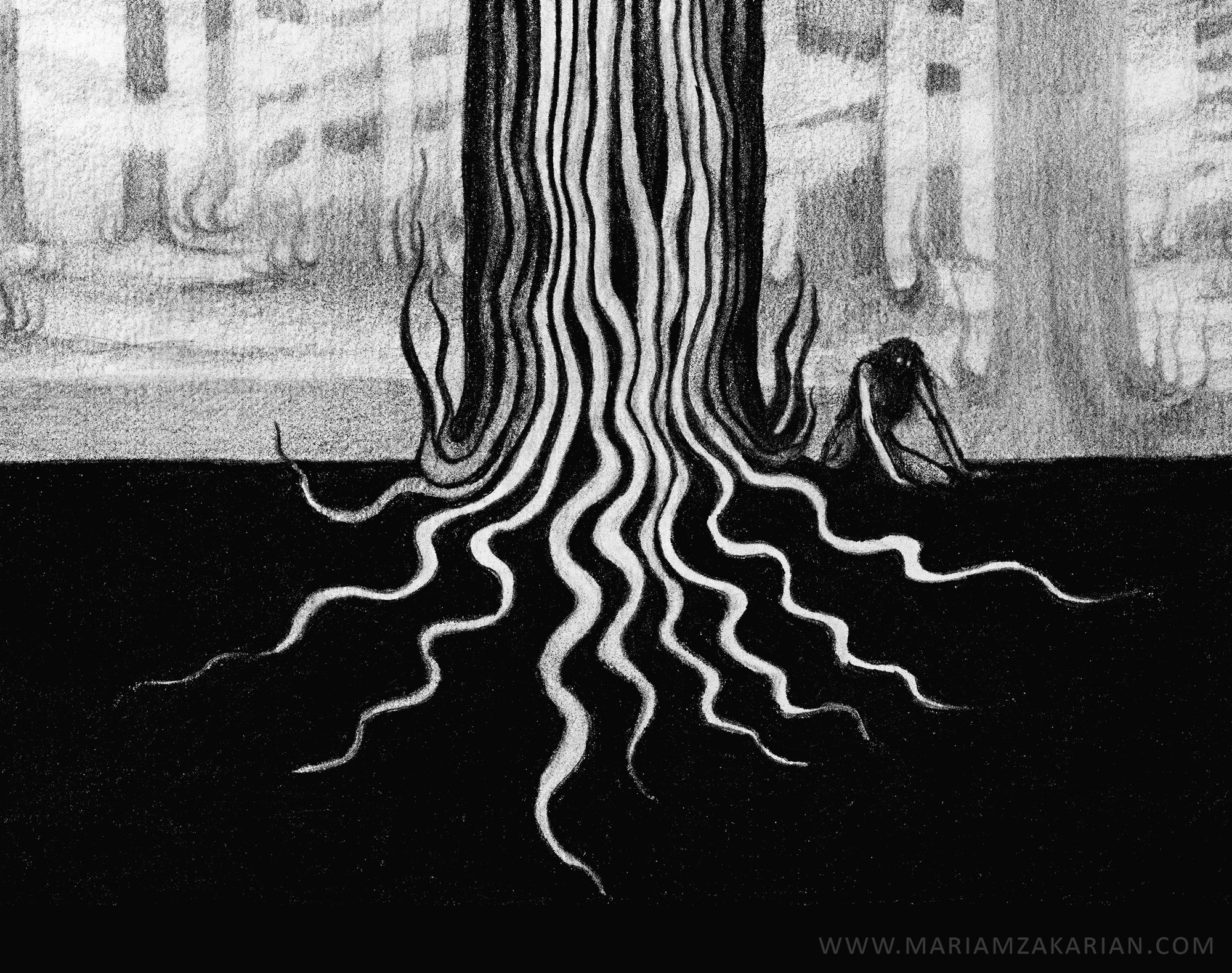
Moonlit Forest
The desire to never return from the woods,
and instead to venture deeper still.
Pencils on paper
28 x 36 cm
2016

Black Milk
The capricious nature of the goat has associations to Pan, the god of the wild in Greek mythology,
and the Devil in more recent myths and religions. Here he bears lively poppies in full bloom,
and black milk, the symbol of eternal sleep.
Pencils on paper
28 x 36 cm
2018




Ghosthorse
Many cultures have myths about monstrous horses.
Helhesten from Norse mythology was among the inspirations for this piece.
The three-legged horse is associated with Hel, the goddess of the underworld.
A symbol of death and sickness.
Pencils on paper
28 x 36 cm
2017



Leviathan
The mythical creature described as a sea serpent
and an embodiment of chaos.
Pencils on paper
28 x 36 cm
2016


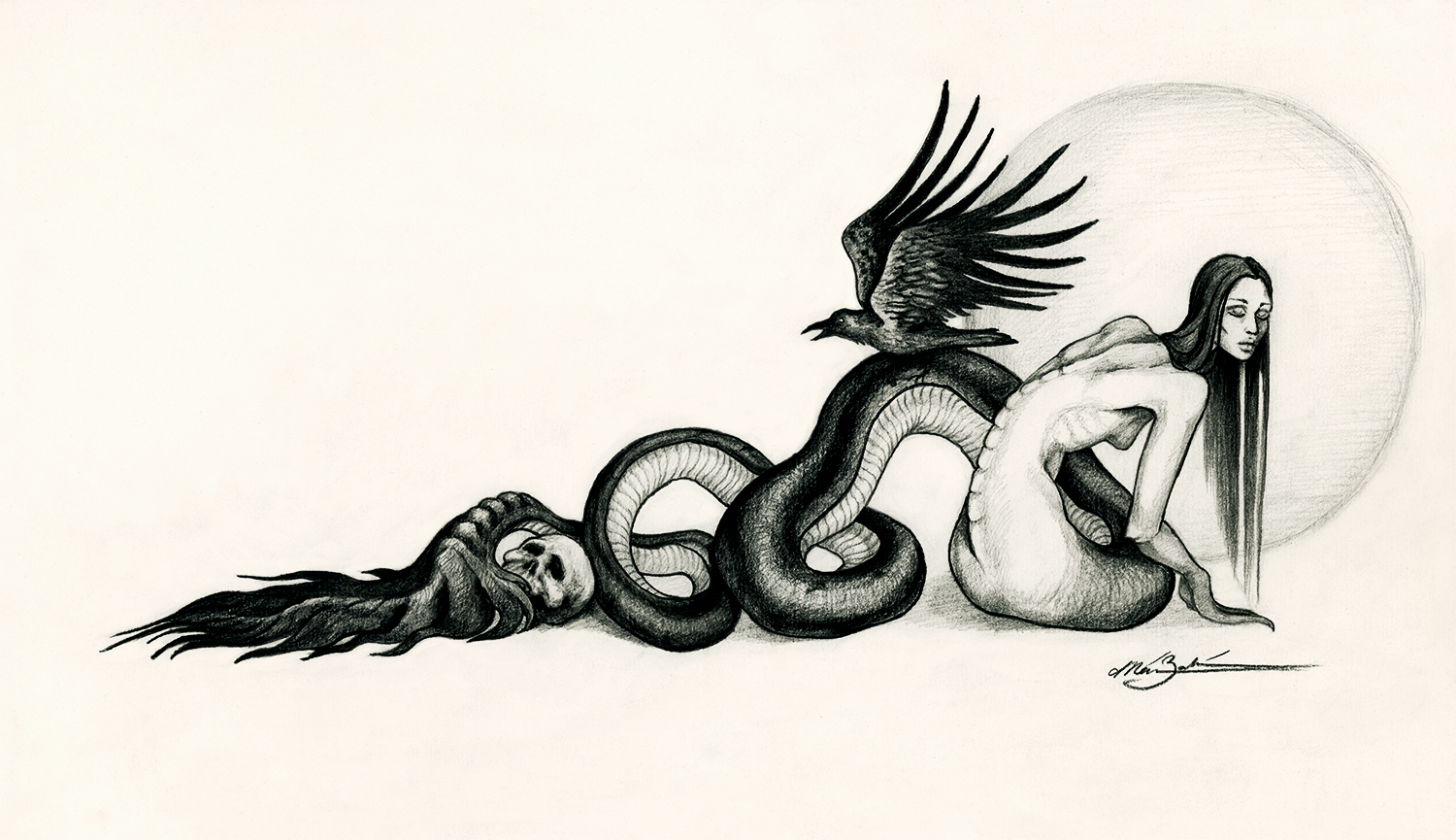
Siren
“Once he hears to his heart’s content, sails on, a wiser man.”
A symbol for the sinful temptation embodied by women throughout Greek Mythology and Christian art,
the seductive songs of the sirens caused ships to sink. But is the Siren at fault for having a powerful voice?
Pencils on paper
36 x 20 cm
2016



Forbidden Fruit
The biblical forbidden fruit of the Tree of Knowledge of Good and Evil
Pencils on paper
16 x 22 cm
2023

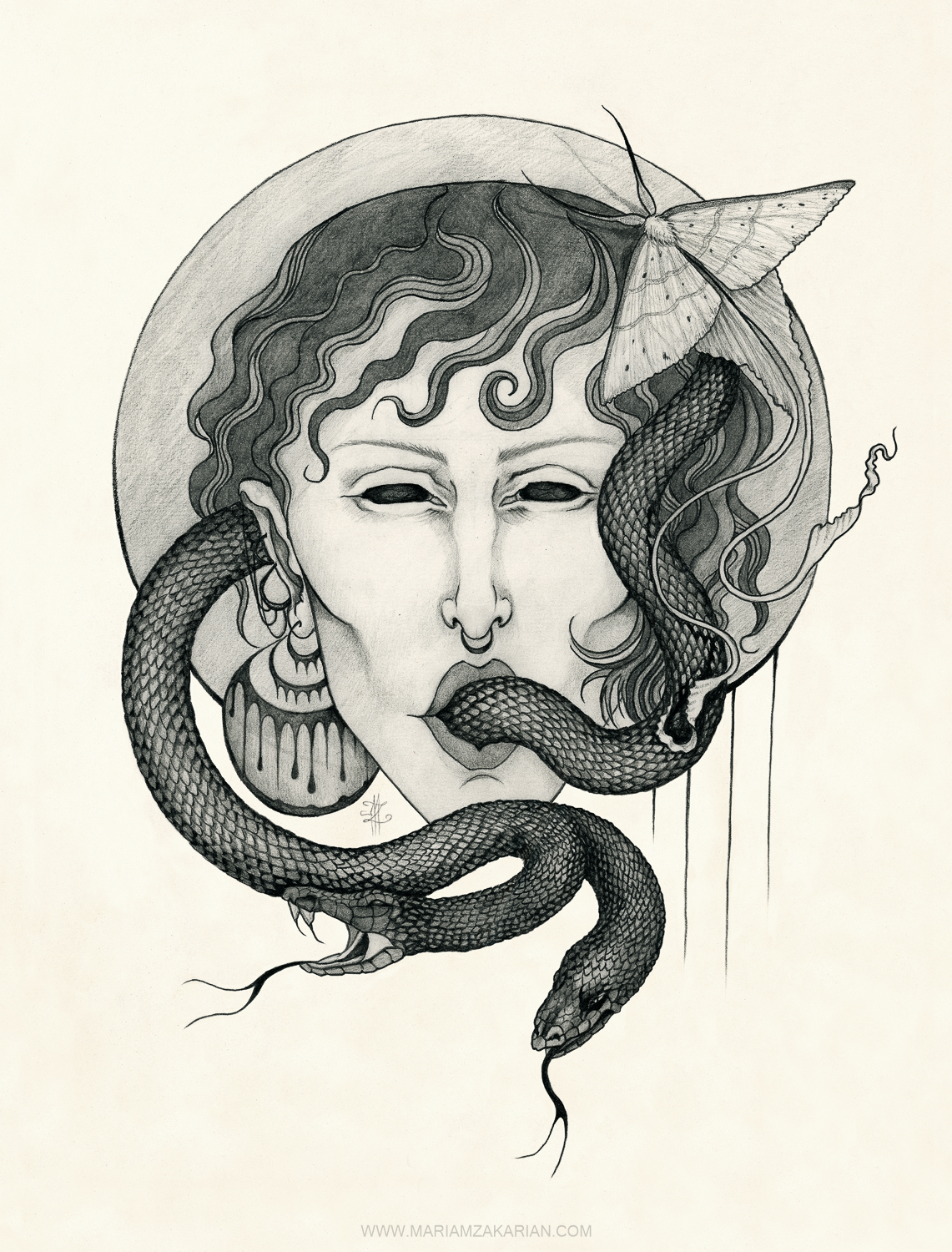
Goddess of Lies
Those without the gift of speech are often attracted to cloven tongues spilling venom.
Inspired by certain large moth species that hatch without mouth parts and die of starvation shortly after mating.
Pencils on paper
28 x 36 cm
2016

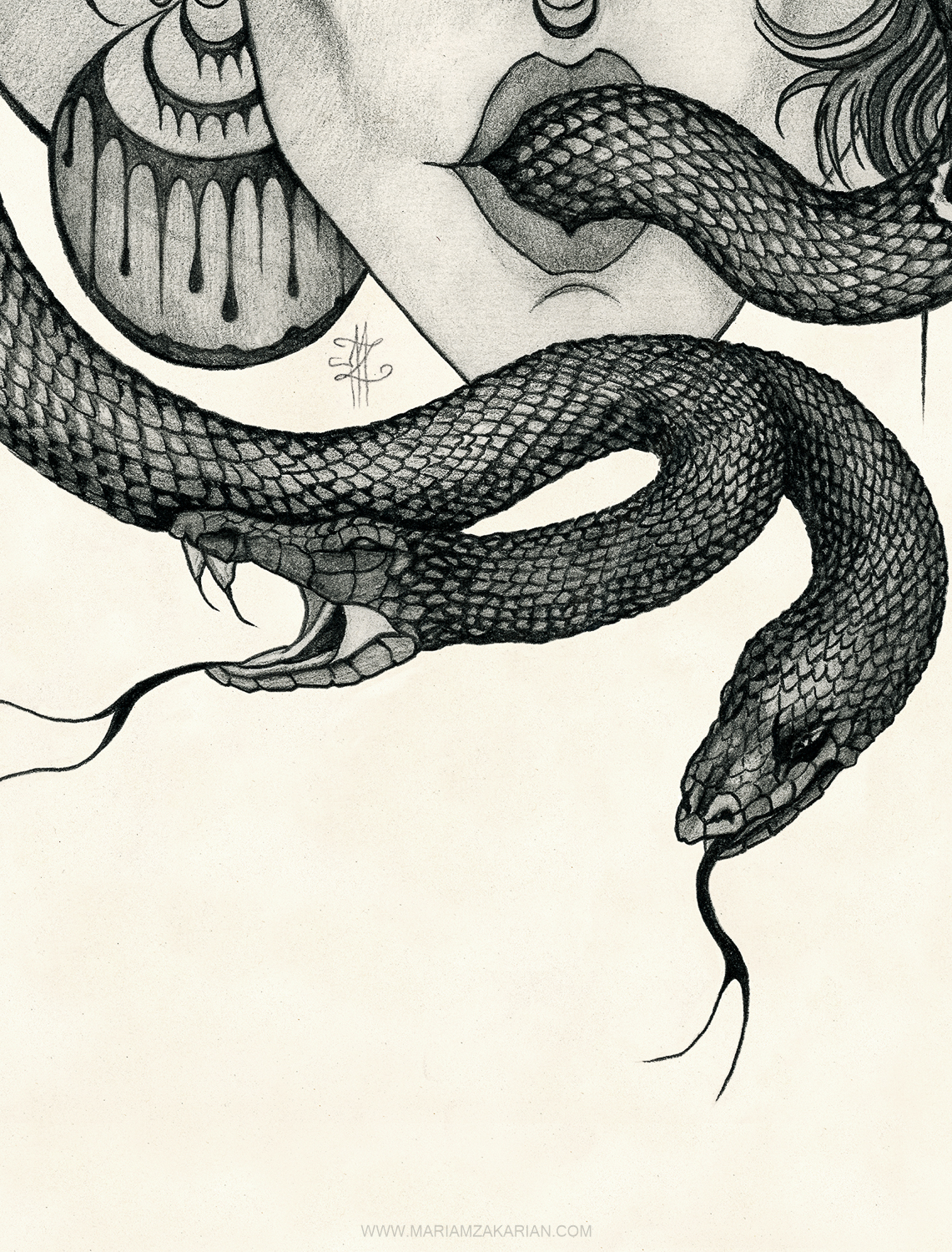

Eve
“When the woman saw that the fruit of the tree was good for food and pleasing to the eye,
and also desirable for gaining wisdom, she took some and ate it.”
Pens and markers on paper
13 x 20 cm
2017


Prayer
Ode to the age of false prophets and professional martyrs.
Pencils on paper
13 x 20 cm
2024


Stigmata
Ode to the age of false prophets and professional martyrs.
Pens and markers on paper
13 x 20 cm
2023

